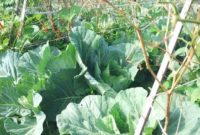Farming practices have always evolved as innovative approaches and machinery were introduced to increase crop yields and minimise costs. One very effective way of achieving both was the introduction of monoculture farming.
This meant that only one kind of crop was cultivated on the land as is done in wheat fields, apple orchards and grape vineyards. However, experts are now indicating that despite benefits, this practice might be having counterproductive effects in terms of the fight against climate change and land degradation.
Given how critical addressing these challenges is, it is worth exploring what the advantages and disadvantages of monoculture farming really are.
Advantages Of Monoculture Farming
Specialised crop production
Any economist will tell you that specialisation is a good thing as it creates economies of scale that maximise profits and minimise costs. The same principle applies to agriculture. By cultivating the same species, the farmer can optimise his or her operations given that growing requirements, planting, maintenance (including pest control) and harvesting will be the same across the farmed land. This helps result in a greater yield at a lower cost.
High efficiency
Monoculture can play to the advantages of the local climate and soil conditions. Crops that are best suited for the land can be planted so that soil and climate specificities such as winds, droughts or a short growing season, don’t impact the yield as much. Again this helps maximise the efficiency of farming processes.
For farmers who breed cattle and other animals, the prospect of increased yields and lower costs is equally appealing, and so monoculture can also be seen there.

Simplicity
What is also appealing for farmers is the apparent simplicity of monoculture.
It is much easier and straightforward to cultivate one kind of crop or breed one type of cattle, in terms of the knowledge and experience needed to do it successfully.
Disadvantages Of Monoculture Farming
While increased yields are critical to affordable food, particularly as our planet’s population is increasing, monoculture farming has some distinct disadvantages which put our planet’s long-term food production potential at risk.
High use of fertilisers
Due to its very nature, monoculture farming, means cultivating one crop, usually in an intensive manner and on a very large scale.
For instance, corn, wheat, soybeans, cotton and rice are commonly grown this way in the United States (US). But growing the same crops year in year out depletes valuable soil nutrients that plants rely on, so this deficiency is compensated for by using increasing amounts of fertilisers.
Susceptibility to pests
Furthermore, monocultures are more susceptible to certain weeds and insect pests which means that pesticides are used to protect against that. Weeds and insect pests can spread faster in a monoculture because of the lack of biological diversity – when one plant is susceptible to a pest, it means that all other plants of the same species are likely to suffer from it.
This has clear implications for the farmers who rely on one crop for their income – if something goes bad, the entire yield can be affected as happened for instance in California in the 1980’s when almost two million acres of vines had to be replanted after it was discovered that their roots were severely affected by a new type of pest.
Environmental pollution
The effects of both pesticides and fertilisers on health and our environment are well known with a lot of these chemicals finding their way into groundwater sources and in the air where they create further pollution.
Loss of biodiversity
In addition to the environmental and health risks of monoculture, monoculture favours the cultivation of specific crops and breeds. This not only means more limited options for the consumer, but it also means that our farming practices are impacting our planet’s biodiversity.
In the US, the Livestock Conservancy estimates that nearly 200 endangered livestock breeds may become extinct due to our overreliance on very few and highly specialised breeds.
A Solution?
While there is no straightforward solution on how to keep all that is good about monoculture and eliminate its negative impacts, there are increasing calls about introducing more regularly the practice of crop rotation.
Crop rotation helps enhance soil quality and resilience to pests by having different crops grown on farmed land. This approach relies on more expert knowledge and setting up a system of crop rotation that makes sense for the land. Both the economic potential and environmental implications of farming activities will depend on the specific practices the farmer chooses to follow.
While, this may make things slightly more complicated for the farmer who has so far relied on monocultures, it is important to note that such practices already exist.
For instance, in Europe arable farming systems have 3-4 year-long rotation systems while similar approaches can be seen in dairy or pig farming systems. Crop rotation practices therefore need to be looked at most closely and the necessary resources in terms of finance, training and research need to be invested to explore its potential.
